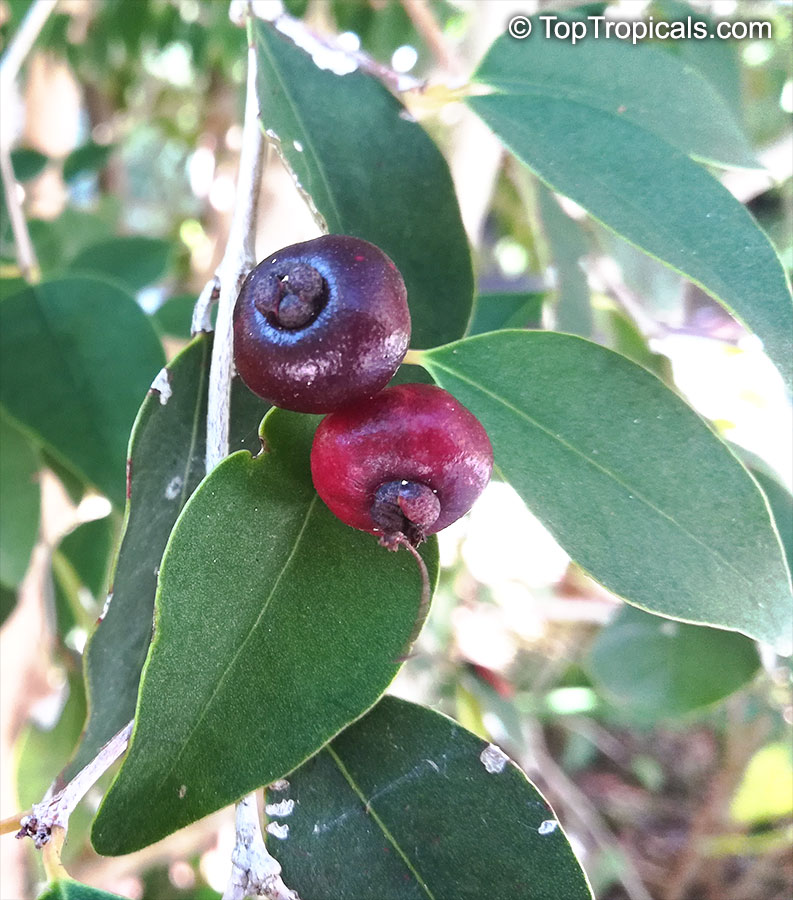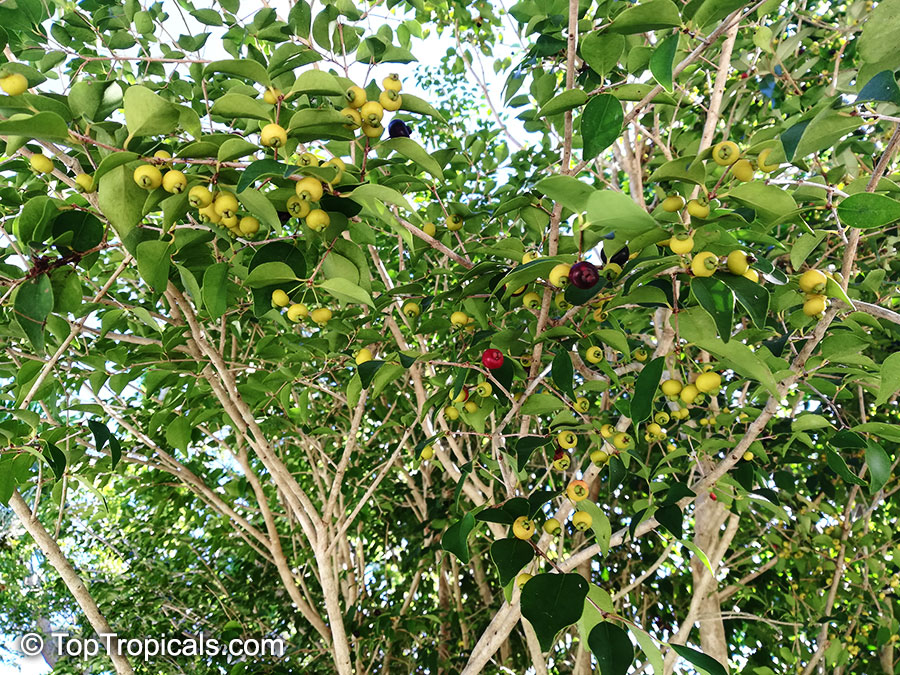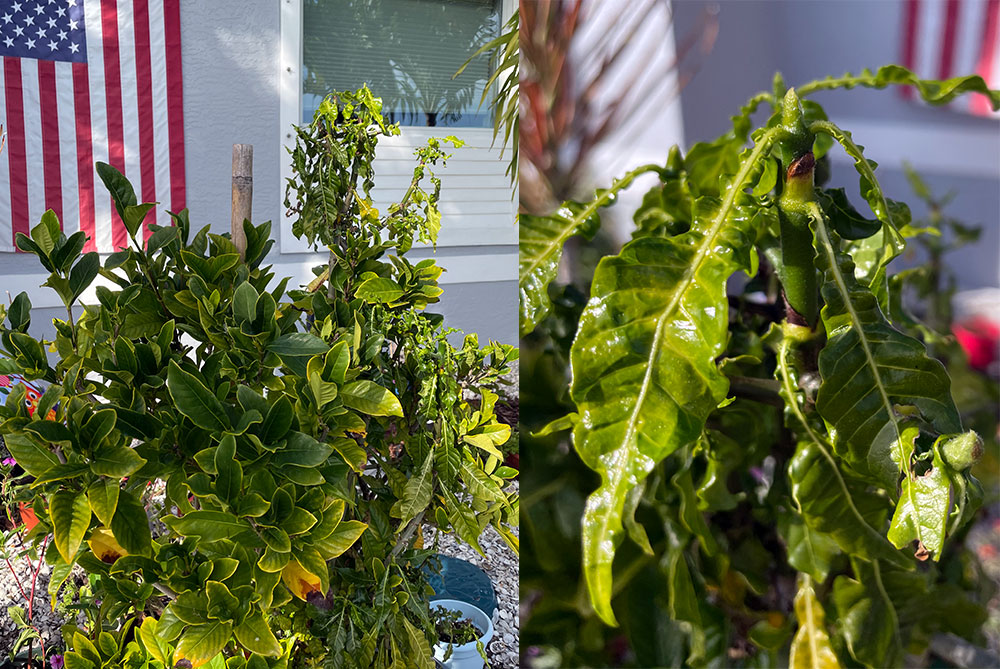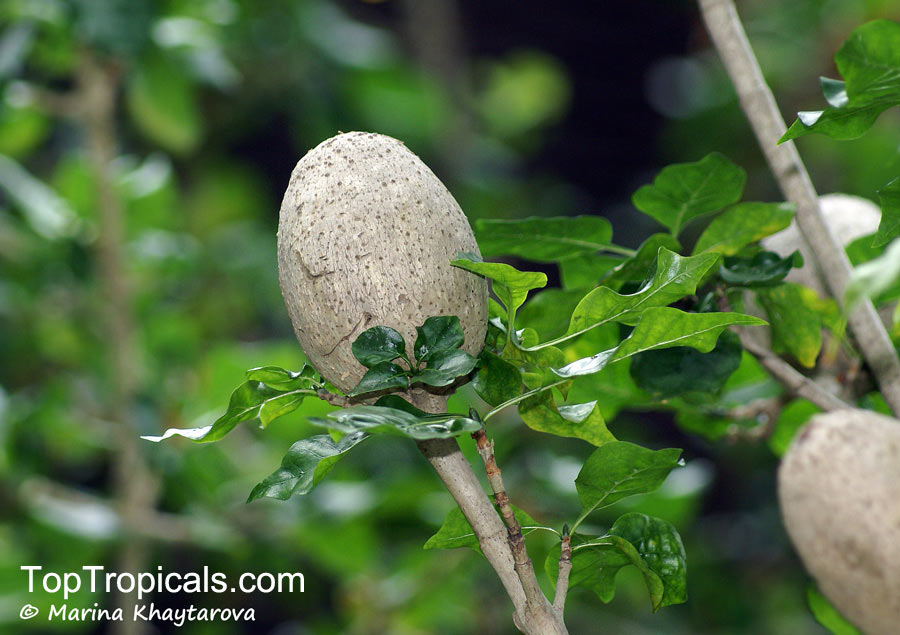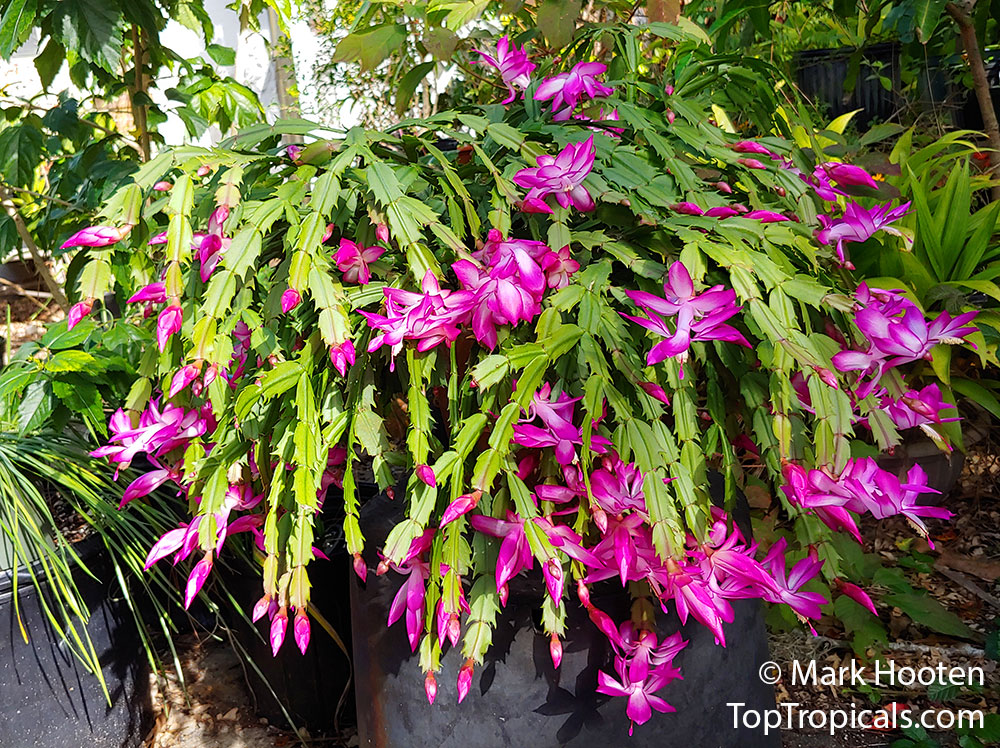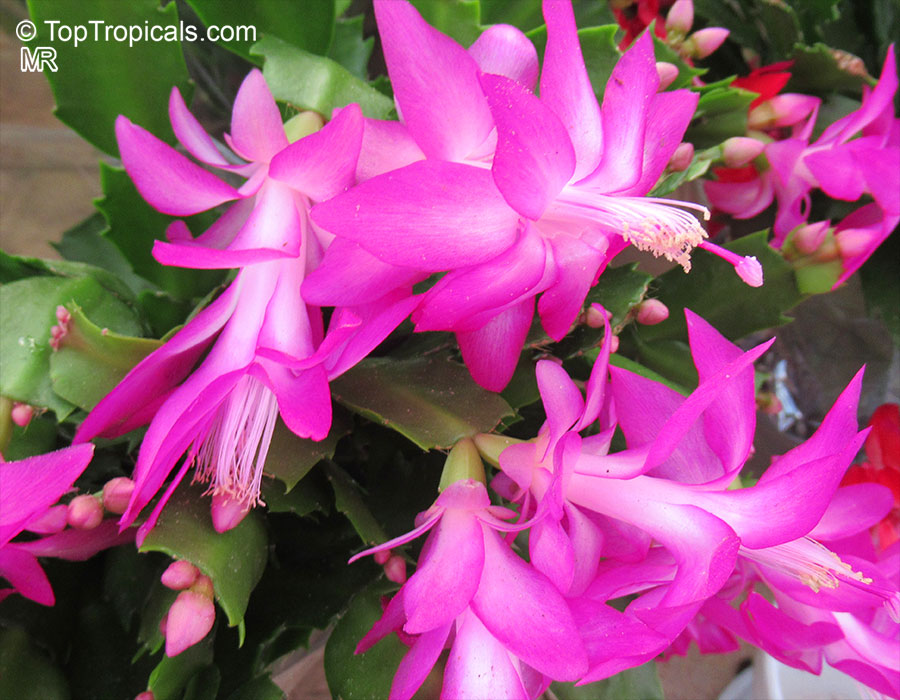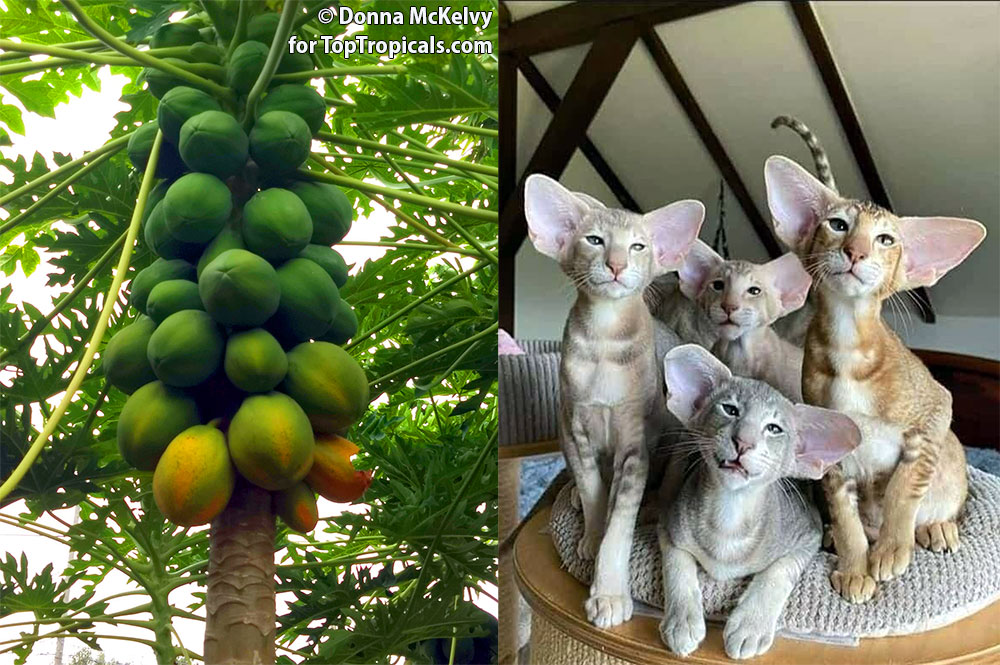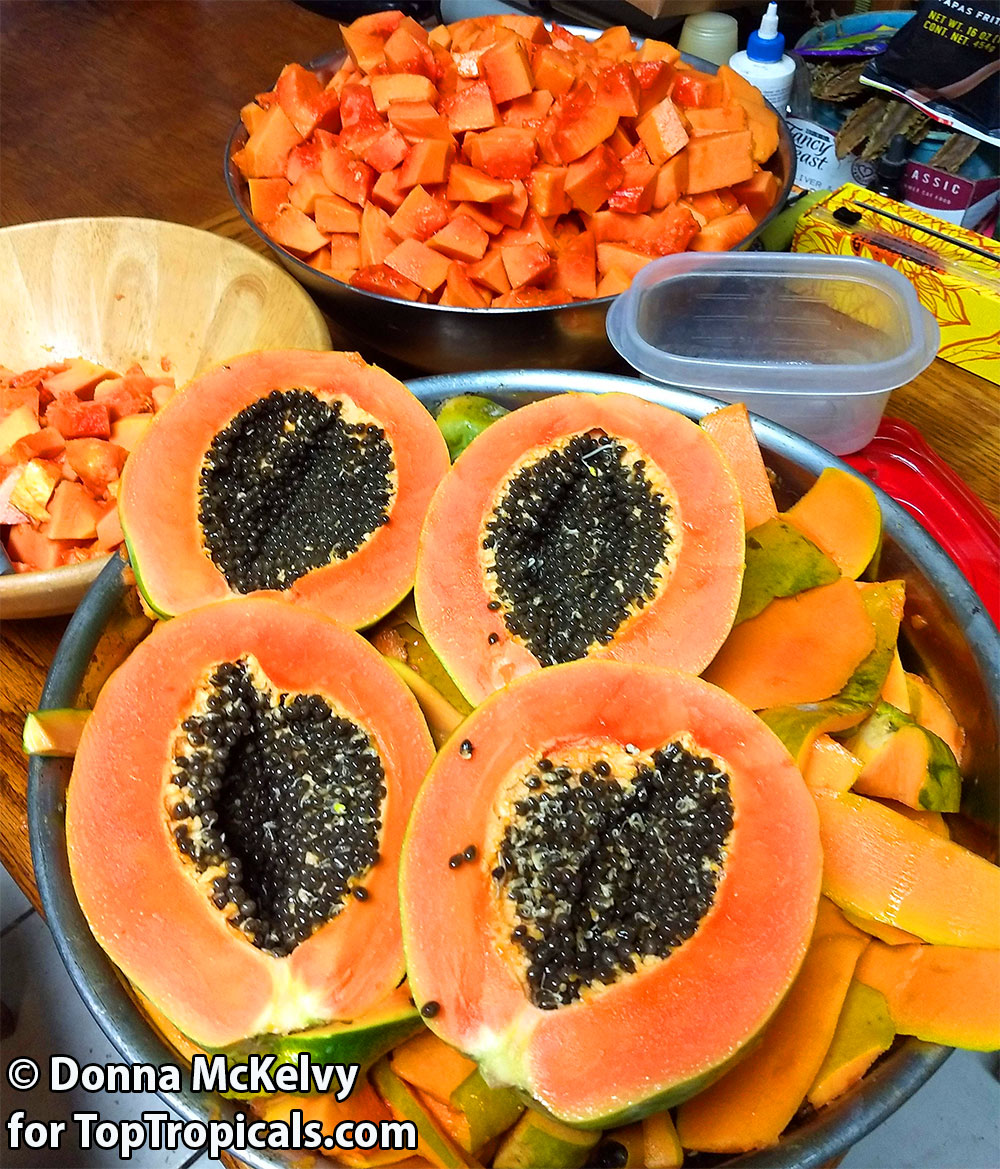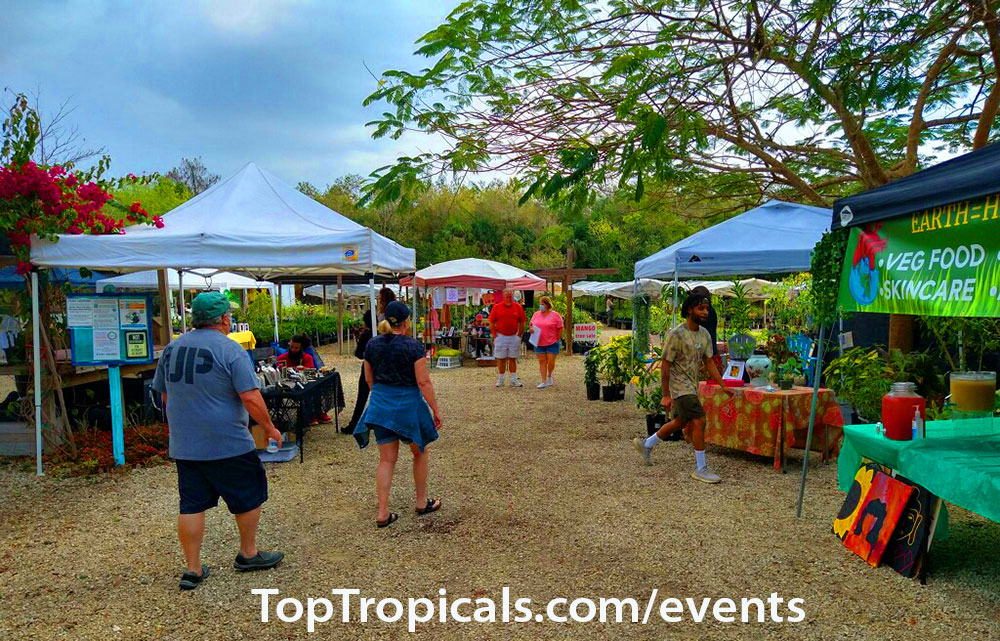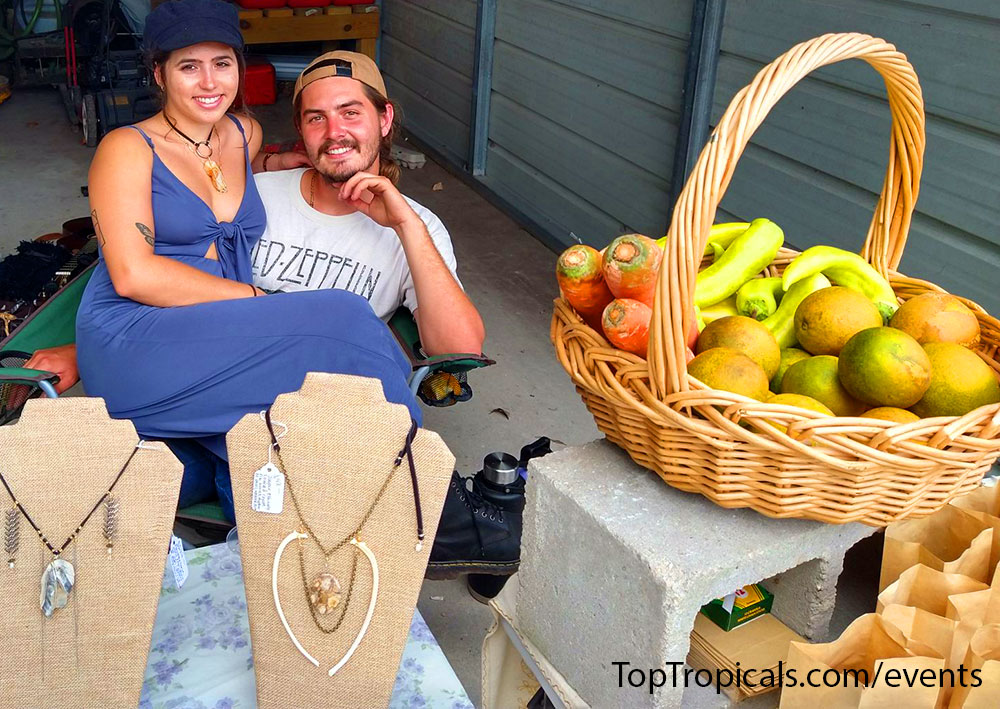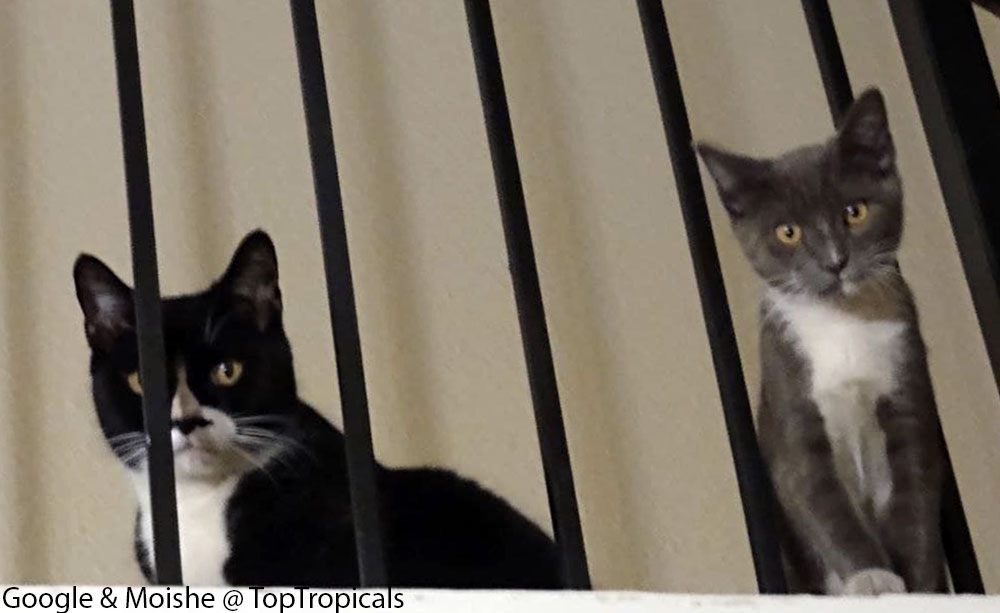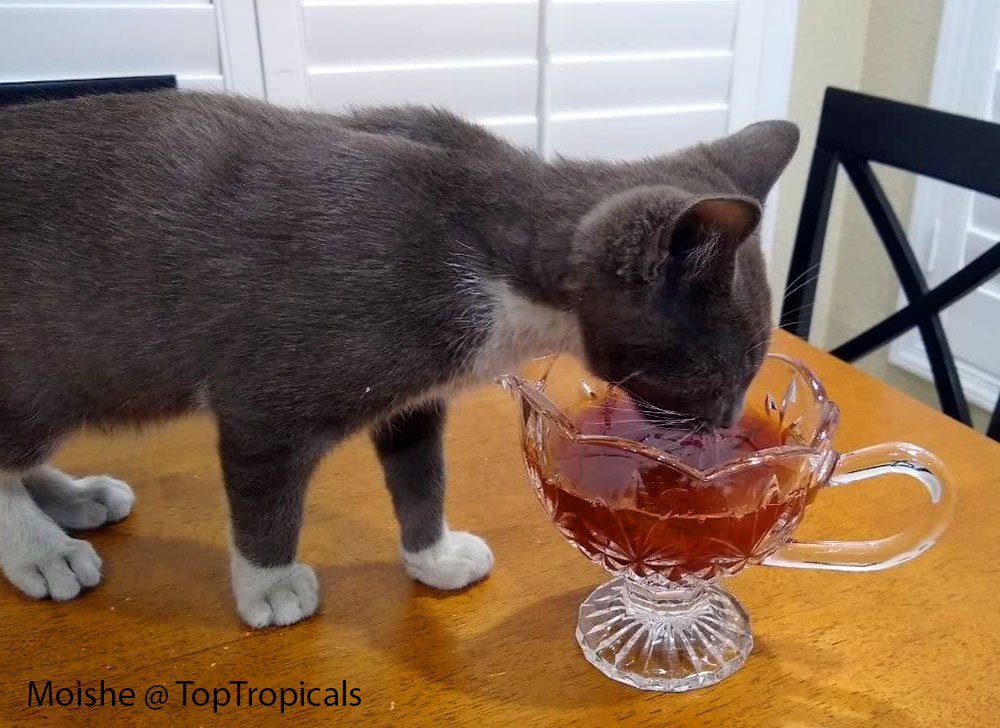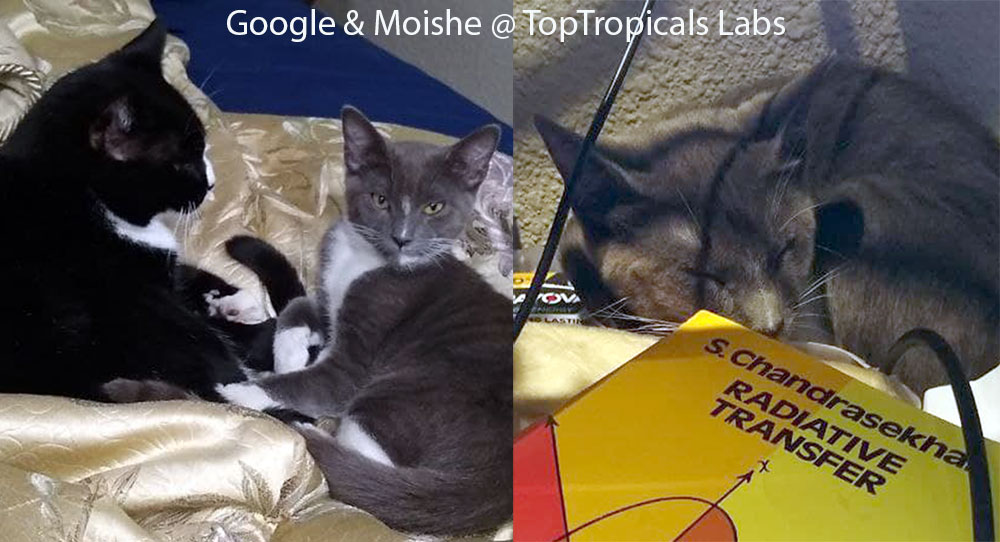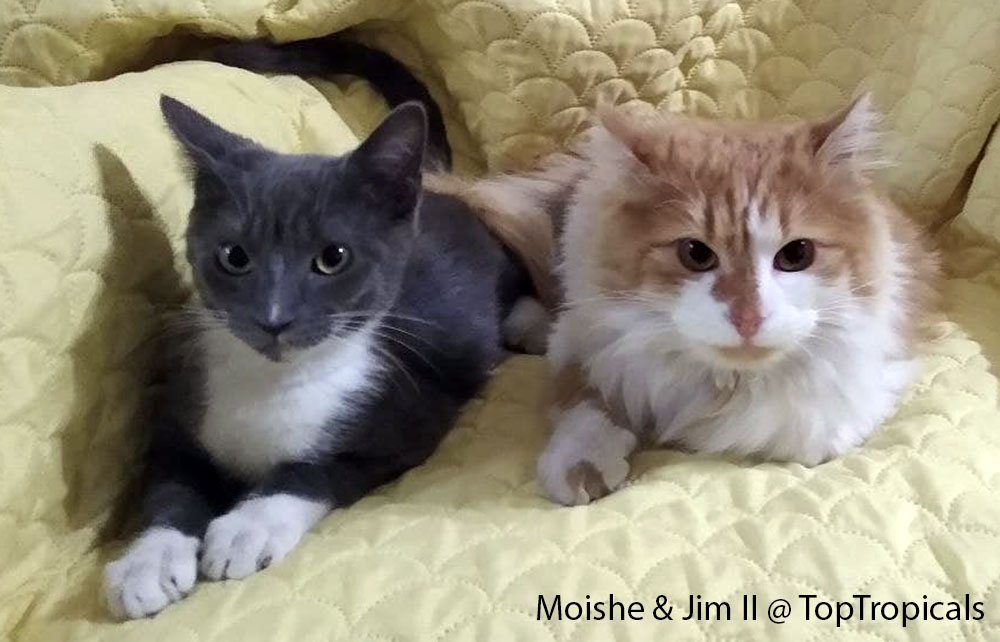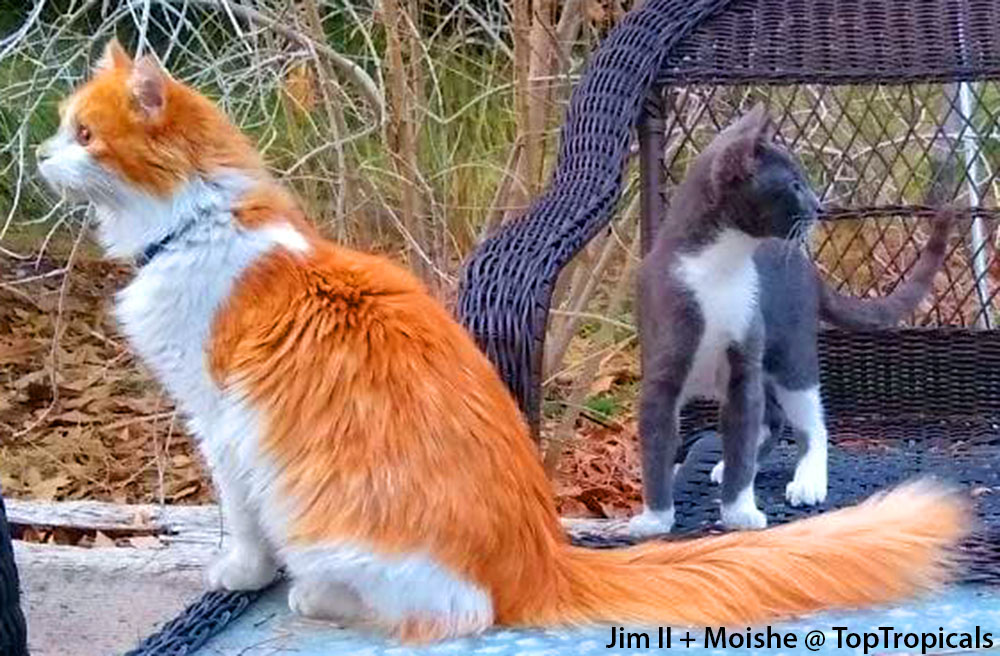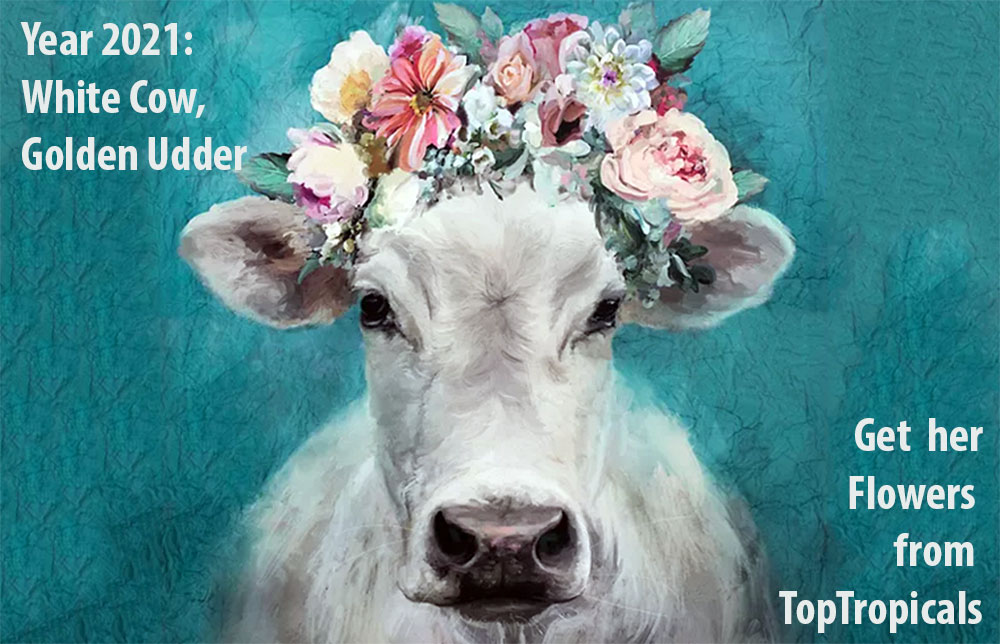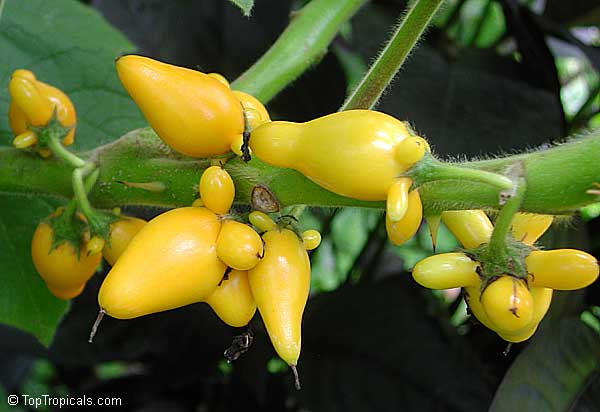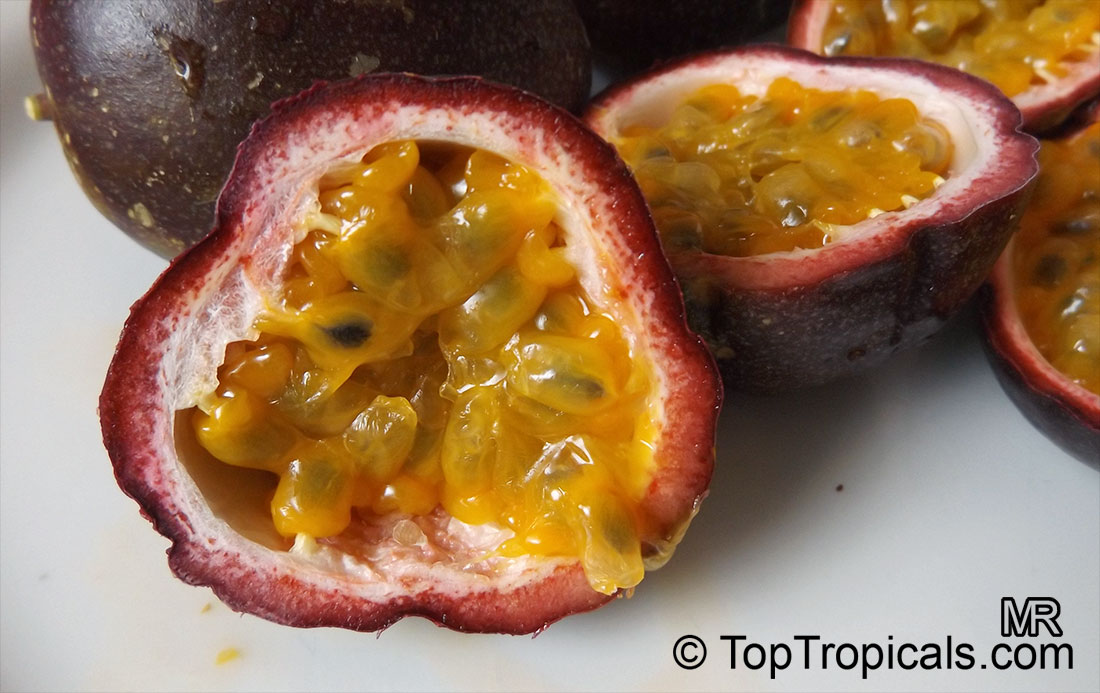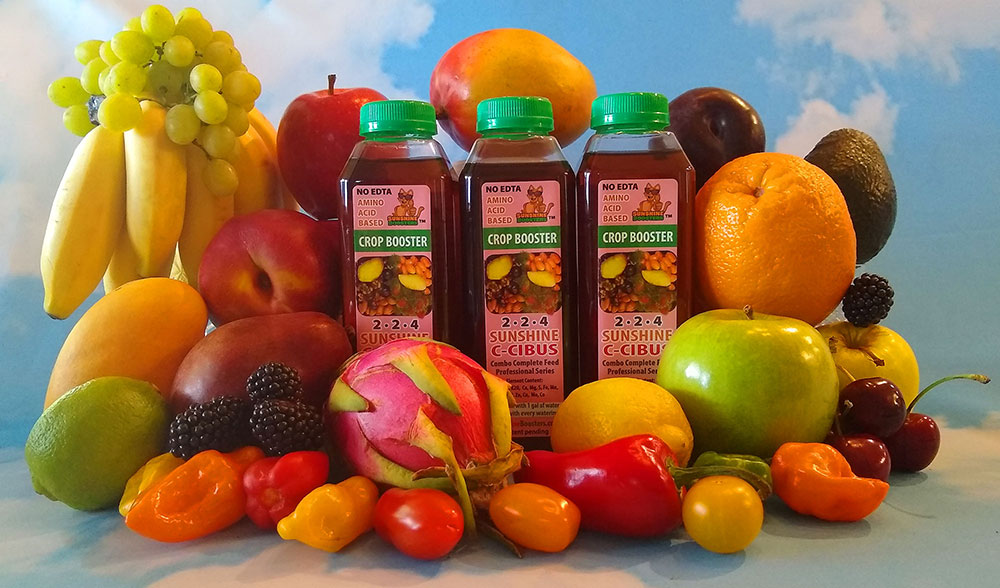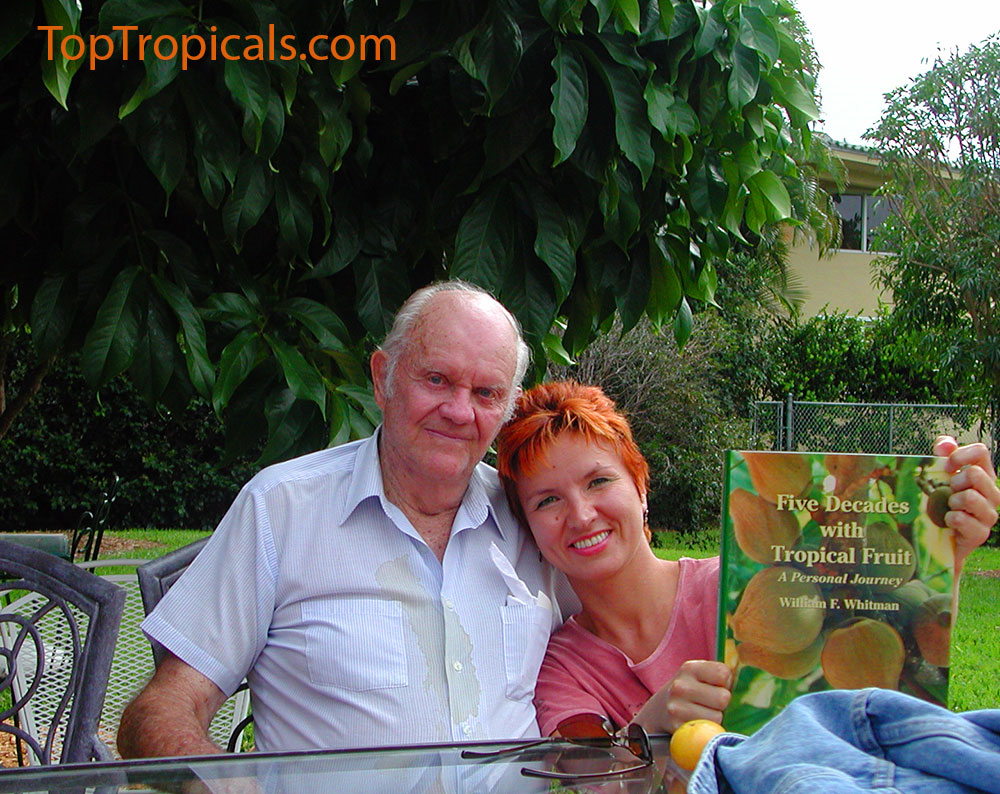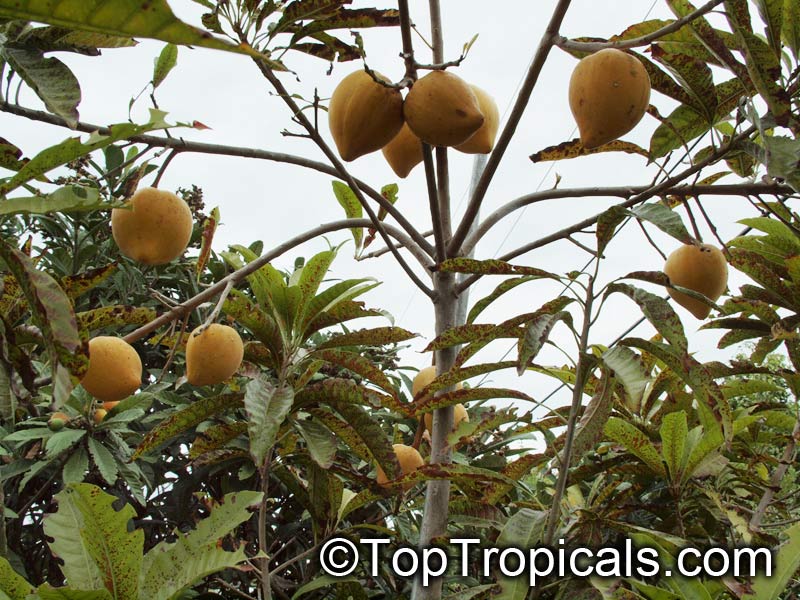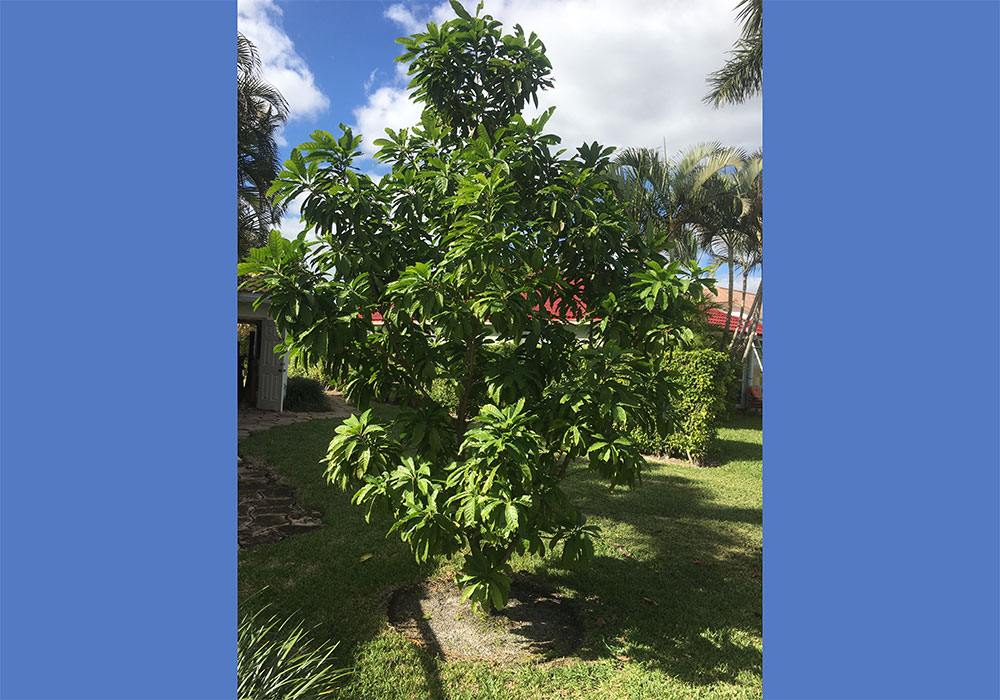Date: 18 Feb 2021 Top Tropicals Newsletter
Red Stopper Cherry
Rare plant from Key West
by Mark Hooten, the Garden Doc
Eugenia rhombea, commonly known in Florida as "Red Stopper", is one of four
species of Eugenia native to North America. It is a beautiful small tree,
bearing small shiny deep green leaves which are pinkish-orange-red when young,
giving them the appearance of a flowering tree at a distance when flushing out
new growth a number of times a year.
Its native range includes Florida, Bahamas, Cuba, Hispaniola and part of
Eastern Central America. However, here in Florida, it is federally listed as an
endangered species, only known from the lowermost Everglades and Keys, where
even there it is rare.
These elegant little trees grow to perhaps 12 or so feet tall, developing
an elegant, umbrella shaped canopy. At a distance, they rather resemble Ficus
benjamina, yet with a more orderly and refined appearance. In addition, they
develop fluffy white flowers with a delightful fragrance, followed by
holly-like long lasting red berries which are relished by wonderful song birds.
Although appearing delicate, this tropical species is surprisingly hardy,
and would likely even make striking, a one-of-a-kind houseplant in the
North.
These very few plants were grown from seeds collected near Royal Palm
Hammock in the Everglades, and and may not be available again for some time...
Date: 11 Feb 2021 Top Tropicals Newsletter
Curious Gardenia graft
Q: I was told to send you pictures of my hybrid gardenia tree. About 6 months ago the new growth on the top of one side became crinkled. It doesn't get straightened out either. It seems like it just stays like that until it falls off. Any ideas?
A: Your plant is not sick at all. This is what happened...
Your gardenia is a grafted variety. Gardenia varieties (Gardenia jasminoides hybrids) are grafted on rootstock of Gardenia thunbergia (this species is nematode-resistant and used for rootstock especially in Florida).
The side branch that you call "crinkled" is actually the rootstock (Gardenia thunbergia) growing from UNDER the graft. Gardenia thunbergia has naturally "wavy" leaves.
If you follow this branch to its base, you will see where it starts - right below the graft. This happens very often.
You need to remove this branch altogether, from the point where it starts.
It sucks energy from the plant and eventually may take over the whole plant.
Photo above: Gardenia thunbergia with curly leaves
Date: 11 Feb 2021 Top Tropicals Newsletter
Schlumbergera x New Deal
A remarkable Christmas cactus hybrid
by Mark Hooten, the Garden Doc
...This hybrid, completely lost to the trade today, is being offered
here for the first time after it was originally offered for purchase at the Brooklyn Botanic Garden over 80 years ago. That institution was having a special rare plant
sale on the day of the famous presidential election on November 8, 1932, when F.D.R. was historically voted in as the next American president.
The plants we are offering are all 3rd generation vegetative propagations
from an original specimen (still alive btw) of a plant purchased from them that very day. Its name is identical to that president's main
campaign slogan!..
CONTINUE READING >>
Date: 8 Feb 2021 Top Tropicals Newsletter
I love growing for the planet!
A word from a happy gardener
"...Wow is all I can say, you all sent the most beautiful plants, I
never knew the Hawaiian Bell could have so many blooms. It arrived in Excellent shape
and I am so very thrilled to have this beautiful plant again. I am keeping
inside for a few days until a front goes thru, then it is going to be back in
mid 70s.
I give aged worm castings to my plants and recently discovered the plant food that the plant can uptake right away... And lastly, I
discovered a potting soil... Some of my plants went wild when I planted them in it.
Everything in it is tailored to not burn your plants. So nothing but the very
best for Top Tropical plants. Thank you all so much for this wonderful
plant, I will treasure and take good care of it. I have over 500 plants in pots,
because of gophers and nematodes. I love nature so do not want to kill the
gophers because the owls we have here depend on them and poisoning is a horrible
death. Much love, happiness and gratitude.
You can use pics - I love growing for the planet. I so love cats too, I
have 5 most of them Siamese. I found this pic of cats online, wow how did they
breed for a cat to have such big ears?
Much love and happiness, Donna..."
Date: 8 Feb 2021 Top Tropicals Newsletter
Valentine's Garden Party was a blast!
We would like to thank all our vendors and guests who made this Garden
Party a real fun event!
If you haven't been to Top Tropicals Festivals yet, and even if you live
far away - it is worth a trip. Lots of vendors with happy crafts, and lots of
happy people. Because Garden People are Happy People! Stay connected and visit
our next Festival - more info coming soon on our Event page...
Date: 4 Feb 2021 Top Tropicals Newsletter
PeopleCats of TopTropicals. Cat of the Month: Moishe, the Google Intern with a Sweet Tooth
Just a few months ago we introduced our new Little Purrrson Jim II that we got as a "toy" for intellectual
Google the Cat, to cheer him up after he lost his friend Jim I... Jim II, the fluffy goofball, grew up in no time and in his turn,
requested entertainment, since Google bored him with his technical lectures... So
we got a toy for Jim-the-toy... and he turned out to be - another
mini-Google!
Moishe is very busy young individual, spending his day solving math
equations and discovering laws of physics... Google appreciates the new generation's input. Jim II is simply glued to the little guy. He follows Moishe everywhere, including boring seminars by Google. Jim loves his new little brother with all his heart!
Moishe's favorite things are - gravity experiments, reading scientific manuscripts, and eating JAM for breakfast! No toast required.
TopTropicals PeopleCat Club and Zoo
Thank you for supporting us in helping PeopleCat Community!
Make
your kind donation today and receive a surprise gift from us! Every little
bit helps. Thank you and God bless you and your pets!
In the photo: Moishe the Scientist and Jim the Hopeless Romantic
Date: 4 Feb 2021 Top Tropicals Newsletter
2021: White Cow with a Golden Udder... not an Ox!
by Alex Butova, the Witch of Herbs and Cats
In China, the zodiac system calculations are quite complicated... Learn
the science of the Chinese horoscope and find out why the symbol of Year 2021
is actually the Metal Cow - not an Ox!..
...See what lucky flowers this year brings you and meet the most bizarre
plant - Nipple Fruit, or Cow's udder!..
CONTINUE READING >>
Date: 1 Feb 2021 Top Tropicals Newsletter
The Passion Fruit - Juicy Maracuya
by Alex Butova, the Witch of Herbs and Cats
...There was an unexpected confusion with the name of this plant. Most
people understand its name literally: passiflora - a flower of passion, and
its fruits - the fruits of passion, implying human, earthly passions.
Nevertheless, the passion fruit is so called because it is one of the
many species of passion flower, the English translation of the Latin genus
name, PassiFlora.
Learn more about this delicious, flavorful fruit and how to grow it in your
own garden in no time...
CONTINUE READING >>
SUNSHINE C-Cibus - Crop Booster, an ultimate natural plant food for fruit and edibles.
Date: 1 Feb 2021 Top Tropicals Newsletter
The Secret of Longevity
finally revealed!
"...Time spent in the garden doesn't count against your lifespan..."
Want to live longer? Surround yourself with plants
If you want to live longer, live around green space. The Barcelona
Institute for Global Health found that for every 10% increase in vegetation that's
within 1,600 feet of your home, your probability of death drops by 4%.
LEARN MORE >>
Why gardening could help you live longer:
1. It gets you into Nature.
2. It's good exercise.
3. You'll eat what you grow.
4. It exercises your mind, while also relieving stress.
LEARN MORE >>
Gardening helps you live to 100
Many of the world's centenarians share one common hobby: gardening. Could you extend your life and drop your stress by taking up the pursuit, too? People living in these so-called "blue zones" have certain factors in common - with daily exercise habits and a plant-based diet, for starters. But they share another unexpected commonality. People are gardening well into old age - their 80s, 90s and beyond. Could nurturing your green thumb help you live to 100? Let nature nurture you!
LEARN MORE >>
The healthiest people in the world don't go to the gym.
Moving naturally throughout the day might sound pleasant and romantic,
but the reality is that 100 years ago only 10% of us had sedentary jobs,
whereas today it's 90%. However, there are still easy ways to add more movement into your busy lifestyle. The research also showed that walking even as little as two hours per week could reduce the risk of cardiovascular disease, respiratory disease, cancer, and help you live longer.
What work out can be better than Gardening? Fresh air, lots of exercise, yet fun and rewarding!
See also: Forget the gym and get to gardening.
In the photo: The Father of American Tropical Fruit Horticulture Bill Whitman, age 92, is presenting his book Five decades with tropical fruit to Top Tropicals after giving a tour of his historical garden in Bal Harbor, Miami (2006)
Date: 25 Jan 2021 Top Tropicals Newsletter
Healthy Plants: Q&A from Mr Booster
How to get Canistel tree to produce
without dropping flowers and fruit
Q: My Canistel tree is 3 1/2 years old and is growing very well, see the picture below. It gets hundreds of pea sized "berries" but then they fall off. No canistel fruit. What's wrong?
A: You have such a nice looking tree, it is a shame you can't get
any fruit to ripen.
In our experience, Pouteria trees dropping fruit prematurely is a very common problem.
There may be one of the following reasons, or a combination of them:
- Cold winters may affect production, and while Canistel is generally
pretty hardy tropical plant that can easily withstand short periods of chill, the
fruit may never form properly if it had a cold winter.
- Lack of water. Canistel tree is pretty drought tolerant, but for the
proper production cycle it needs regular irrigation. Especially during hot
summer.
- The tree may be not strong enough; young trees drop fruit very often when
they don't have enough "fruiting energy" built up in their system.
Your tree looks well established and vigorous, however, flower/fruit drop
is often a sign of insufficient nutrients of particular kind, usually Boron
(B) and/or Molybdenum (Mo): either when a tree is too young and not strong
enough, or because of poor soils and lack of necessary elements.
Here is what can be done, considering you live in a warm, frost-free climate.
1. Provide regular fertilizing program. We recommend liquid
fertilizers Sunshine Boosters that are safe to use with every watering and year
around. It is beneficial to switch plants from traditional "slow-release"
fertilizer to the liquid one because it makes a huge difference in plant growth
and flower/fruit quality and quantity. See also:
- Why liquid fertilizers are better than dry
- Article about benefits of liquid fertilizers.
Use this plant food for your Canistel tree:
SUNSHINE C-Cibus - Crop Nutrition Booster
2. Apply micro-element remedies that are very effective for improving fruit production, especially when flower or fruit drop occurs:
SUNSHINE Honey - promotes more efficient blossoming and pollination, makes
flowers bigger and reduces bud drop.
SUNSHINE SuperFood - improves plant vigor and quality and size of
flowers
These are all natural, eco-friendly supplements that work great for fruit
trees and other edibles.
